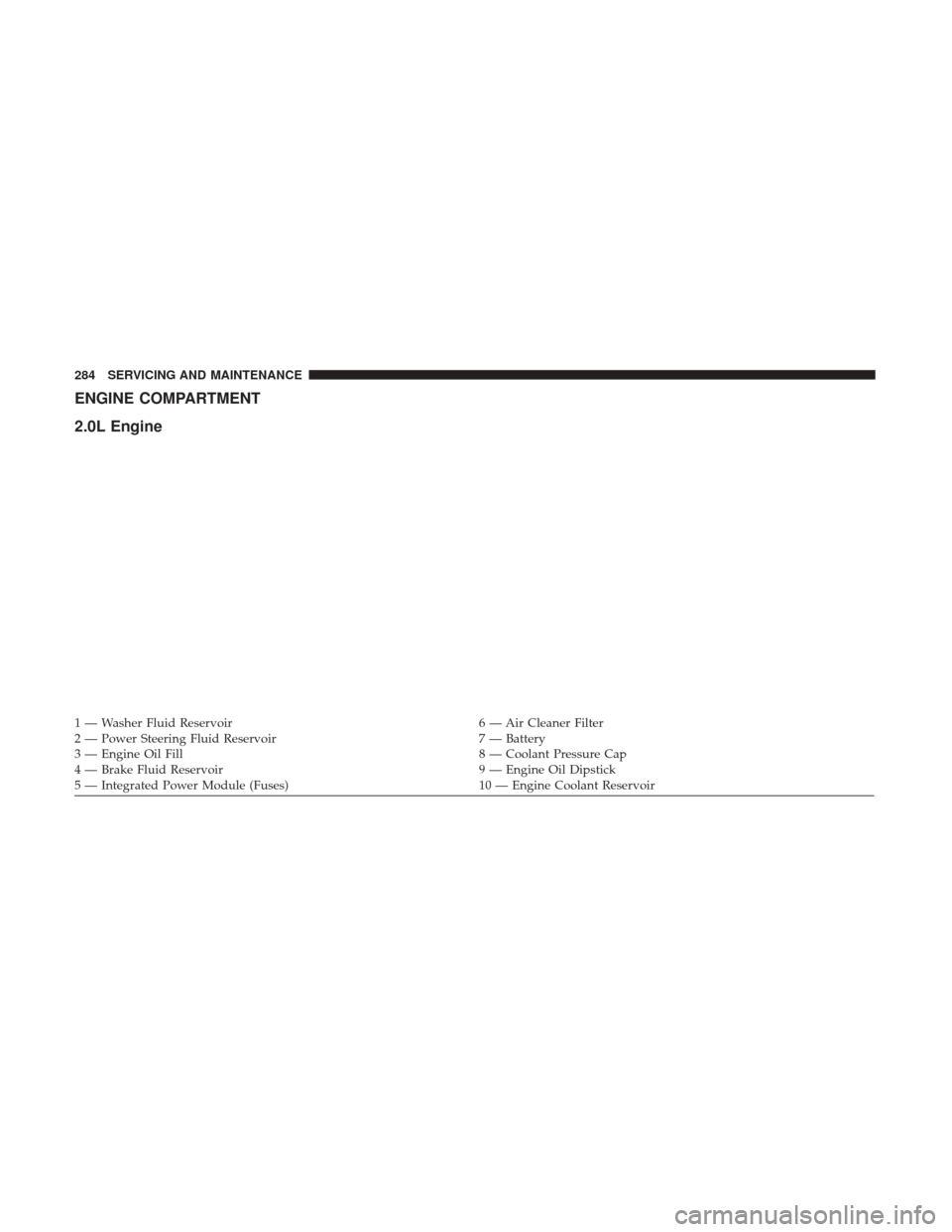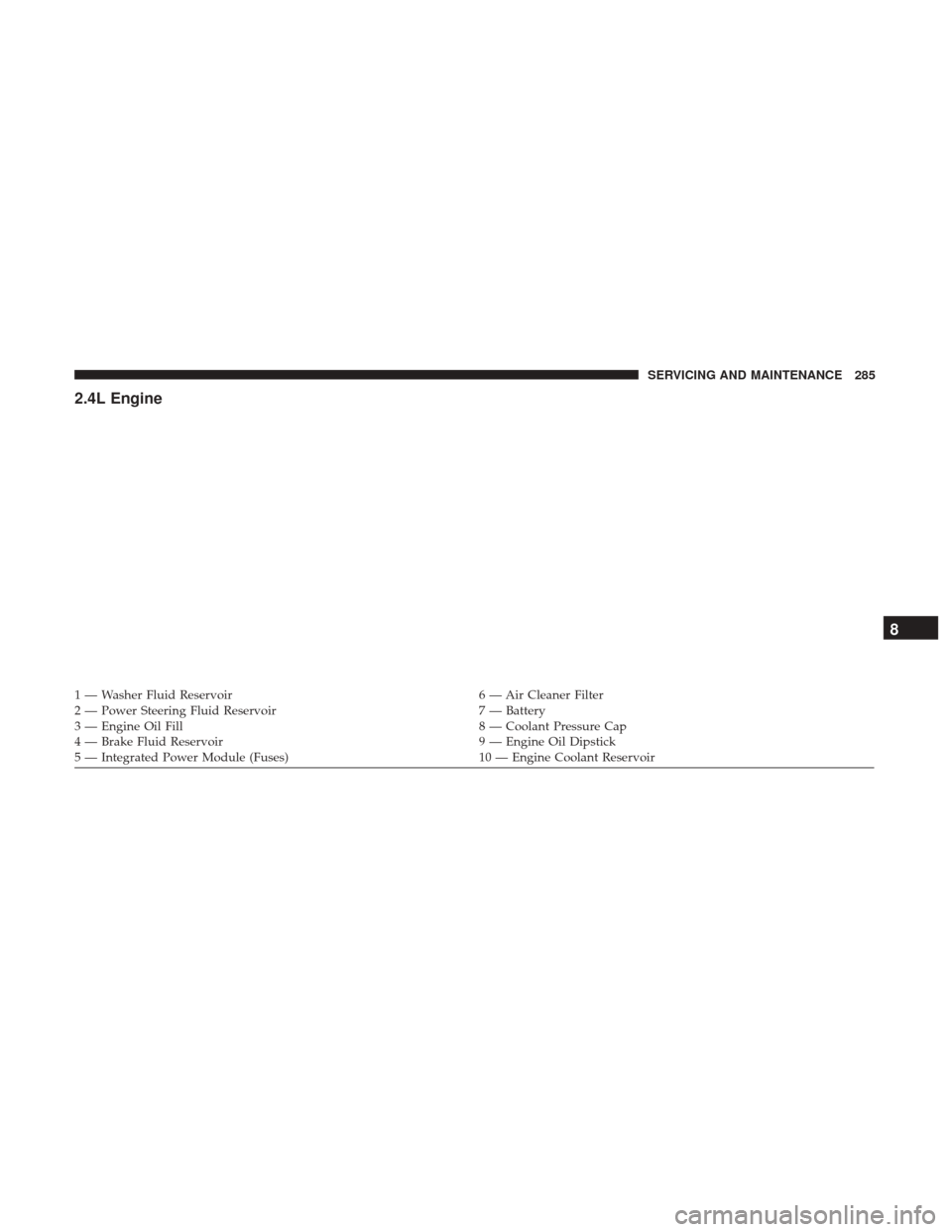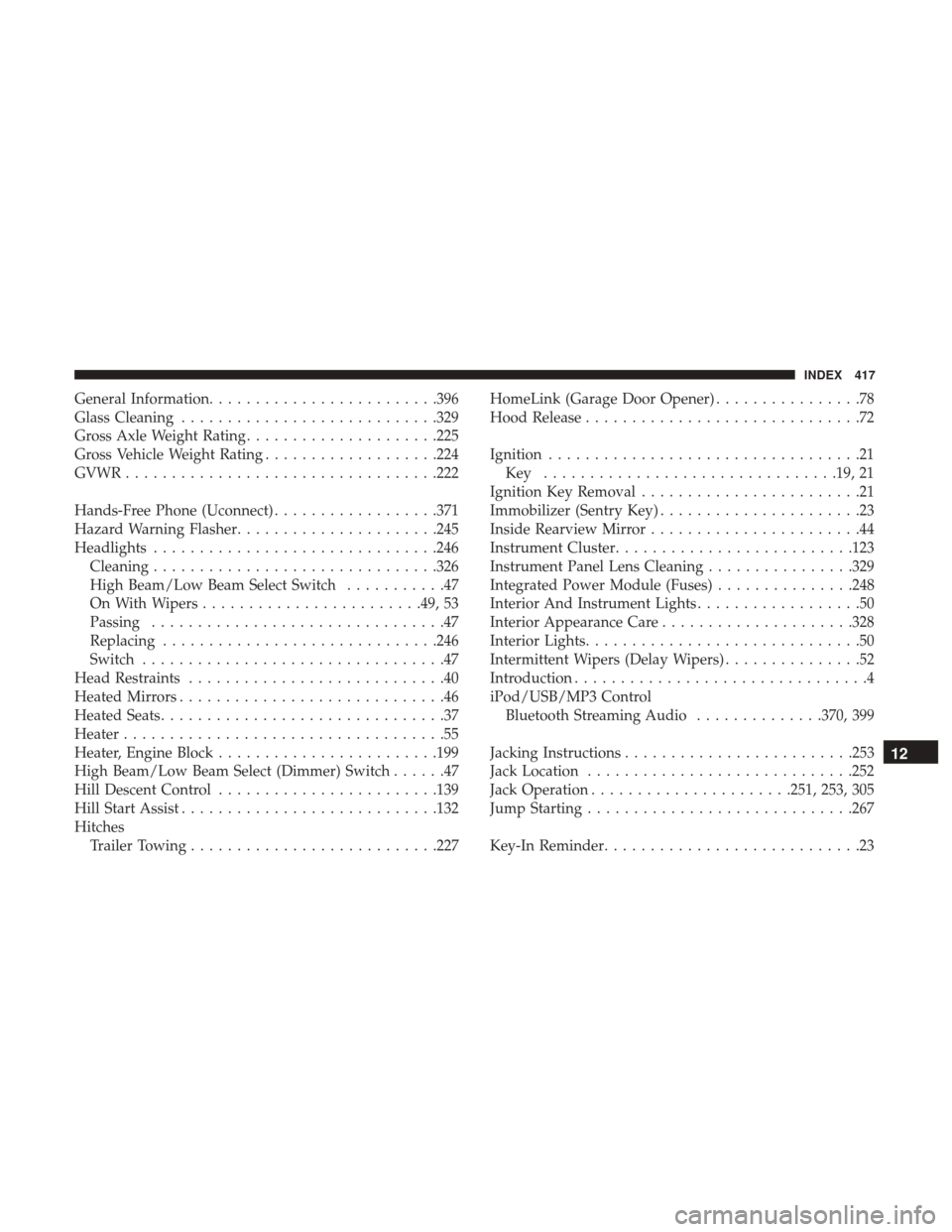fuse JEEP COMPASS 2017 2.G User Guide
[x] Cancel search | Manufacturer: JEEP, Model Year: 2017, Model line: COMPASS, Model: JEEP COMPASS 2017 2.GPages: 429, PDF Size: 3.46 MB
Page 286 of 429

ENGINE COMPARTMENT
2.0L Engine
1 — Washer Fluid Reservoir6 — Air Cleaner Filter
2 — Power Steering Fluid Reservoir 7 — Battery
3 — Engine Oil Fill 8 — Coolant Pressure Cap
4 — Brake Fluid Reservoir 9 — Engine Oil Dipstick
5 — Integrated Power Module (Fuses) 10 — Engine Coolant Reservoir
284 SERVICING AND MAINTENANCE
Page 287 of 429

2.4L Engine
1 — Washer Fluid Reservoir6 — Air Cleaner Filter
2 — Power Steering Fluid Reservoir 7 — Battery
3 — Engine Oil Fill 8 — Coolant Pressure Cap
4 — Brake Fluid Reservoir 9 — Engine Oil Dipstick
5 — Integrated Power Module (Fuses) 10 — Engine Coolant Reservoir
8
SERVICING AND MAINTENANCE 285
Page 419 of 429

General Information........................ .396
Glass Cleaning ............................329
Gross Axle Weight Rating .....................225
Gross Vehicle Weight Rating ...................224
GVWR ................................. .222
Hands-Free Phone (Uconnect) ..................371
Hazard Warning Flasher ..................... .245
Headlights ...............................246
Cleaning ...............................326
High Beam/Low Beam Select Switch ...........47
On With Wipers ........................49, 53
Passing ................................47
Replacing ............................. .246
Switch .................................47
Head Restraints ............................40
Heated Mirrors .............................46
Heated Seats ...............................37
Heater ...................................55
Heater, Engine Block ........................199
High Beam/Low Beam Select (Dimmer) Switch ......47
Hill Descent Control ........................139
Hill Start Assist ............................132
Hitches Trailer Towing .......................... .227HomeLink (Garage Door Opener)
................78
Hood Release ..............................72
Ignition ..................................21
Key ................................19, 21
Ignition Key Removal ........................21
Immobilizer (Sentry Key) ......................23
Inside Rearview Mirror .......................44
Instrument Cluster ..........................123
Instrument Panel Lens Cleaning ................329
Integrated Power Module (Fuses) ...............248
Interior And Instrument Lights ..................50
Interior Appearance Care .....................328
Interior Lights ..............................50
Intermittent Wipers (Delay Wipers) ...............52
Introduction ................................4
iPod/USB/MP3 Control Bluetooth Streaming Audio ..............370, 399
Jacking Instructions ........................ .253
Jack Location ............................ .252
Jack Operation ..................... .251,
253, 305
Jump Starting ............................ .267
Key-In Reminder ............................2312
INDEX 417
Page 428 of 429

INSTALLATION OF RADIO TRANSMITTING
EQUIPMENT
Special design considerations are incorporated into this
vehicle’s electronic system to provide immunity to radio
frequency signals. Mobile two-way radios and telephone
equipment must be installed properly by trained person-
nel. The following must be observed during installation.
The positive power connection should be made directly
to the battery and fused as close to the battery as possible.
The negative power connection should be made to body
sheet metal adjacent to the negative battery connection.
This connection should not be fused.
Antennas for two-way radios should be mounted on the
roof or the rear area of the vehicle. Care should be used
in mounting antennas with magnet bases. Magnets may
affect the accuracy or operation of the compass on
vehicles so equipped.The antenna cable should be as short as practical and
routed away from the vehicle wiring when possible. Use
only fully shielded coaxial cable.
Carefully match the antenna and cable to the radio to
ensure a low Standing Wave Ratio (SWR).
Mobile radio equipment with output power greater than
normal may require special precautions.
All installations should be checked for possible interfer-
ence between the communications equipment and the
vehicle’s electronic systems.